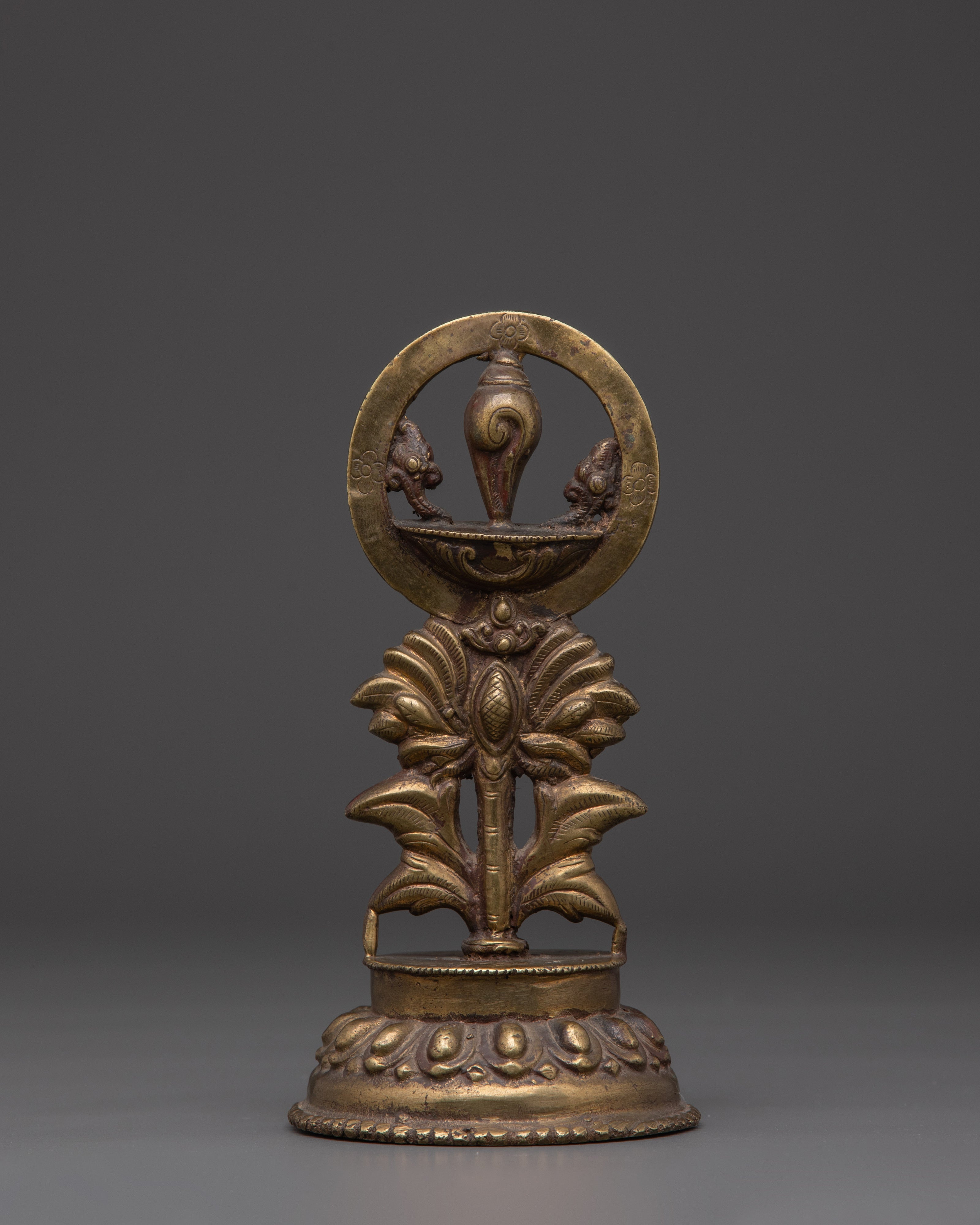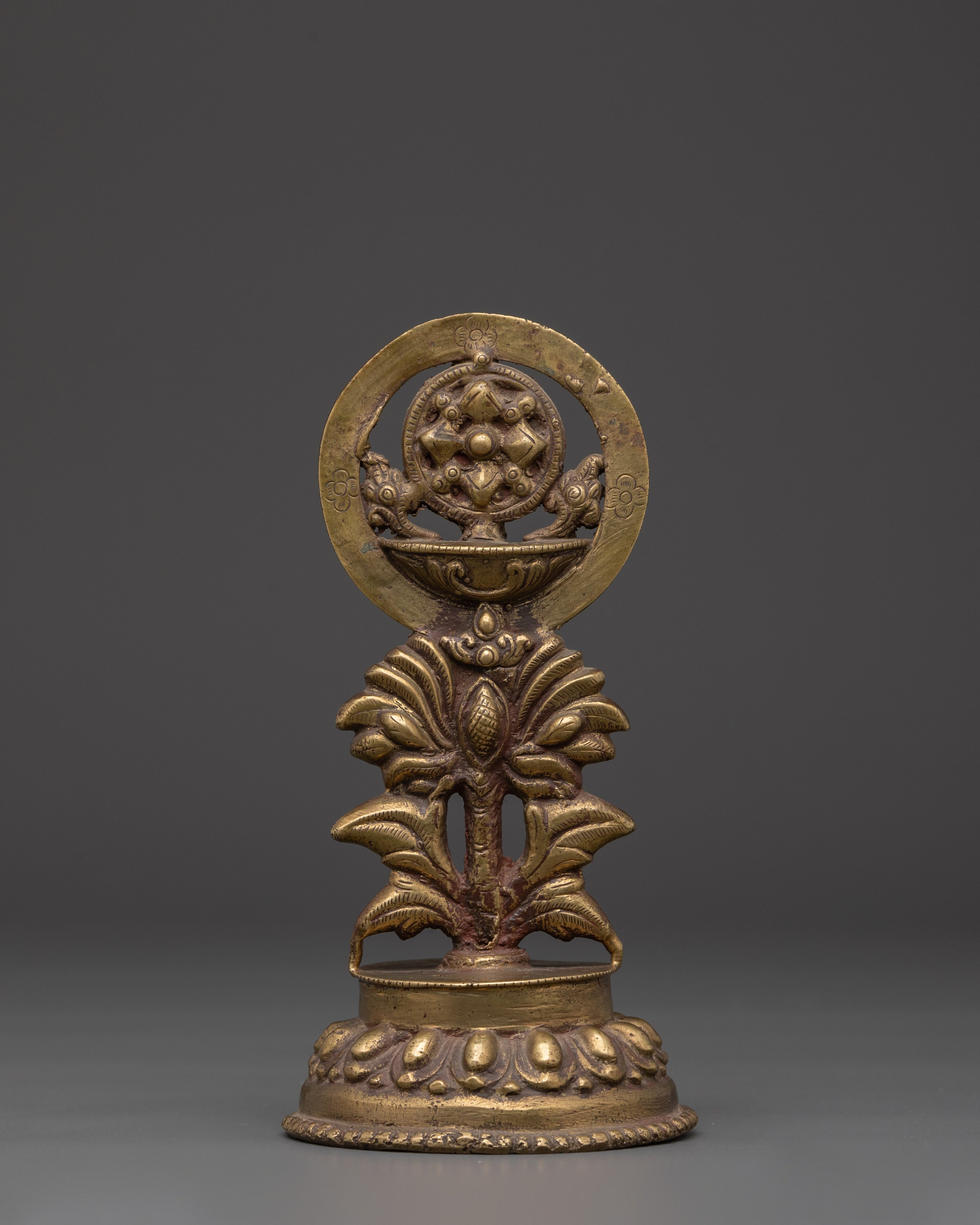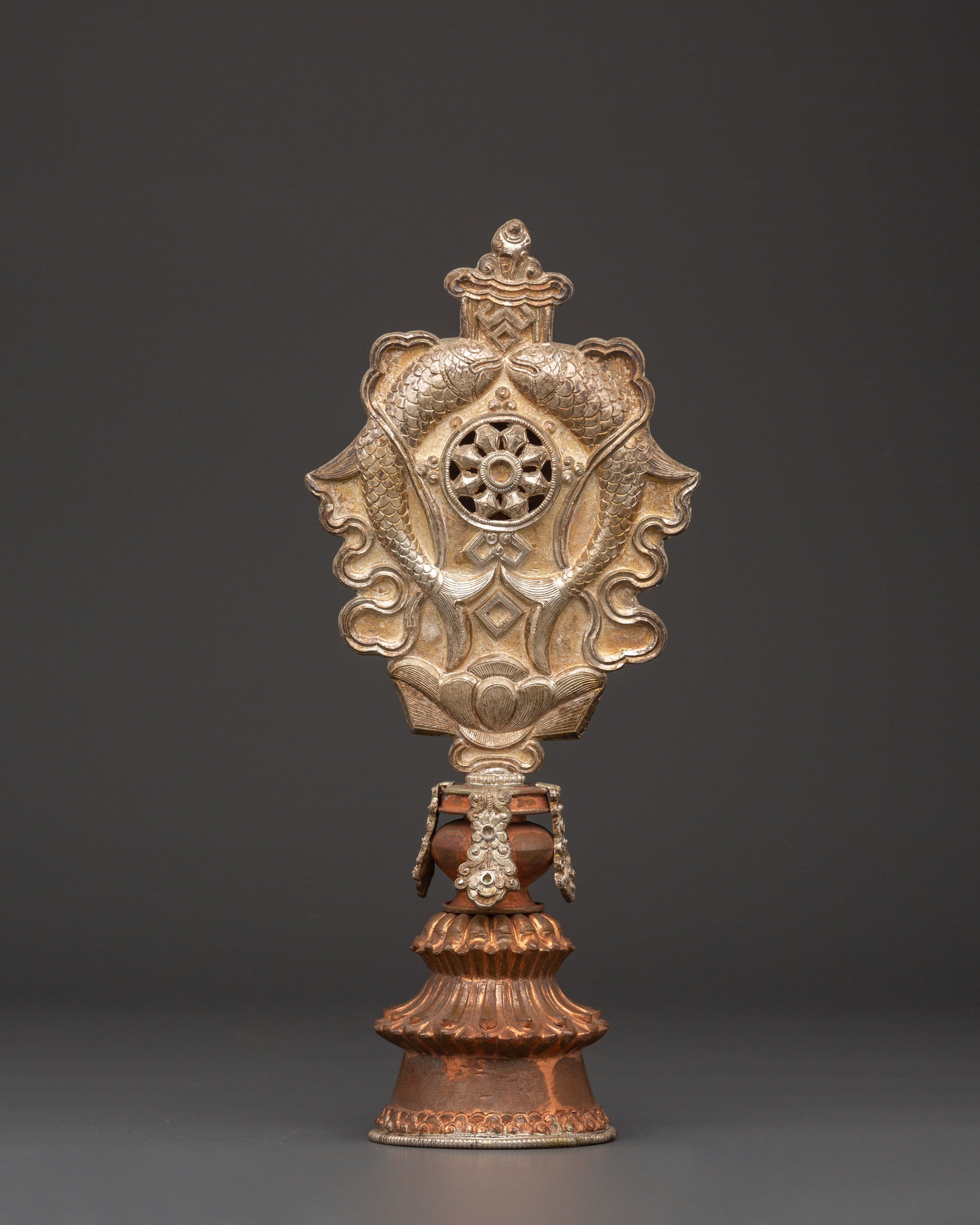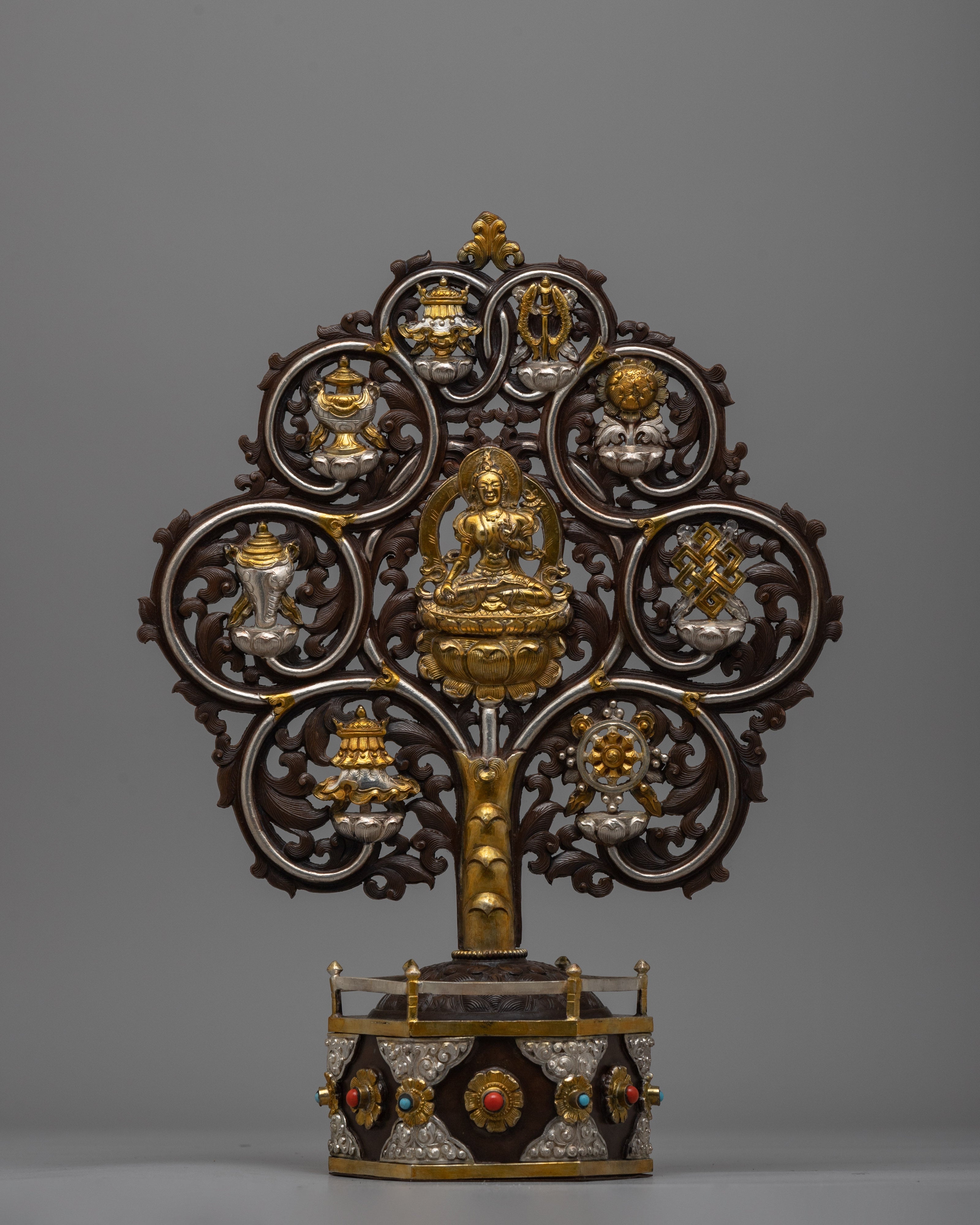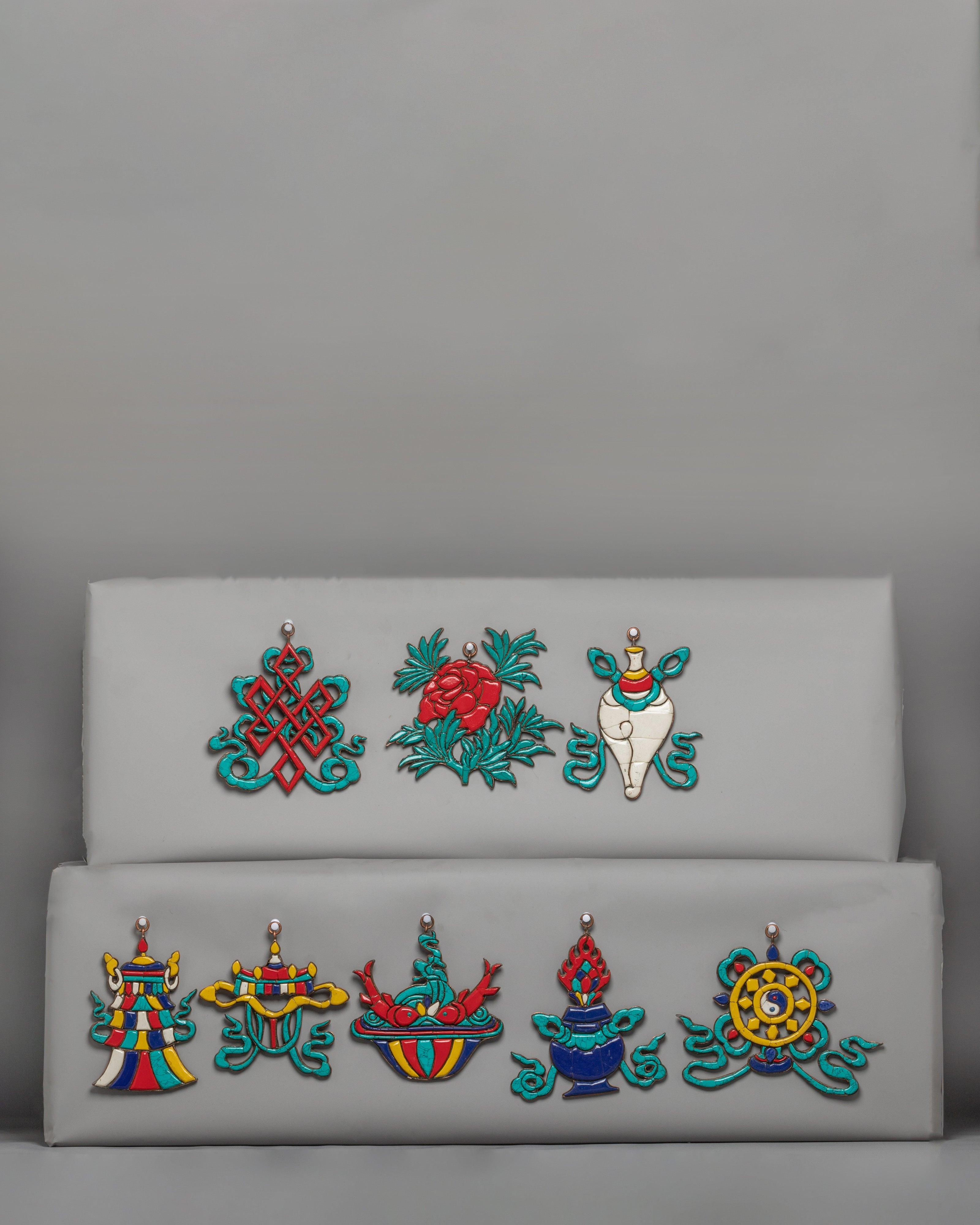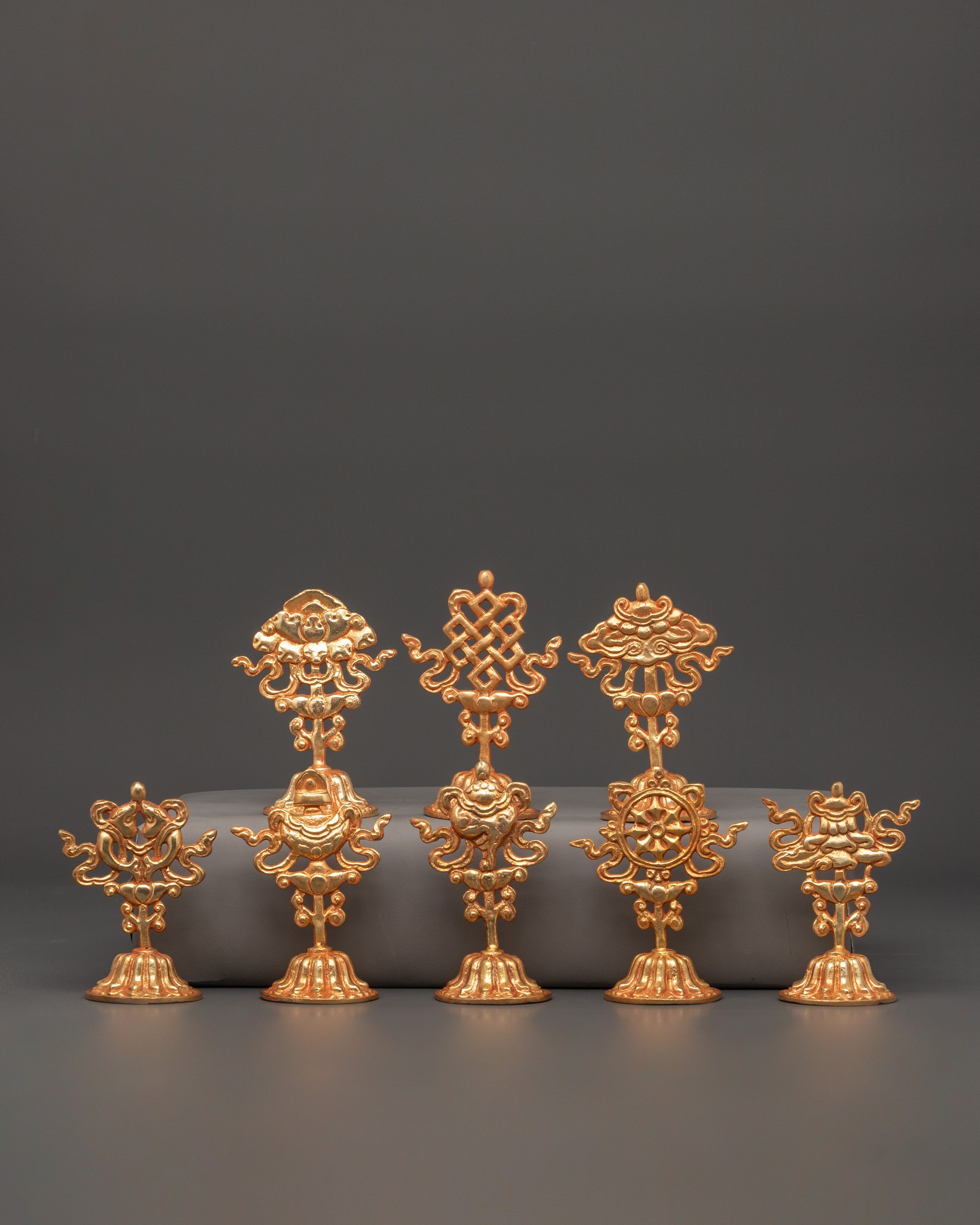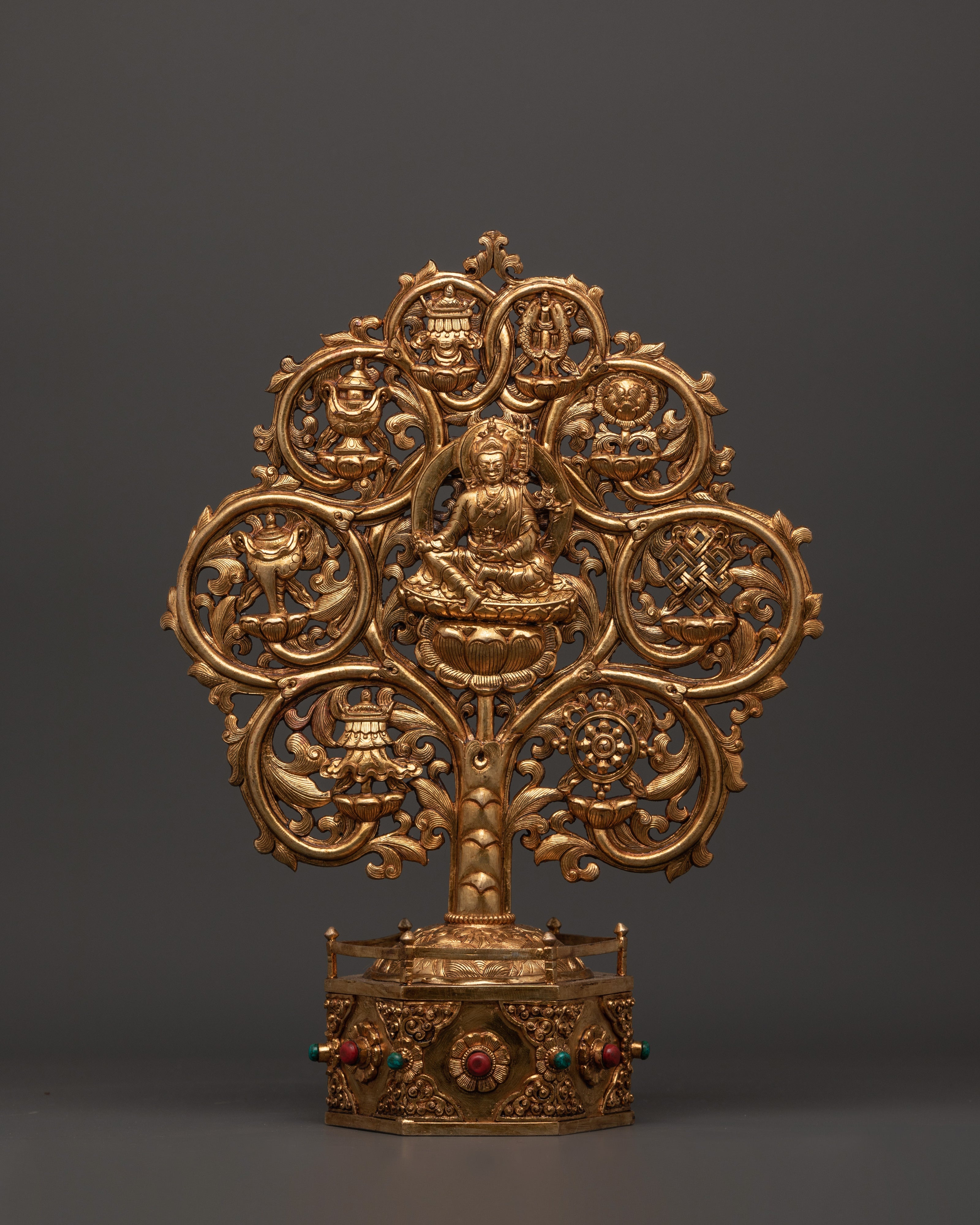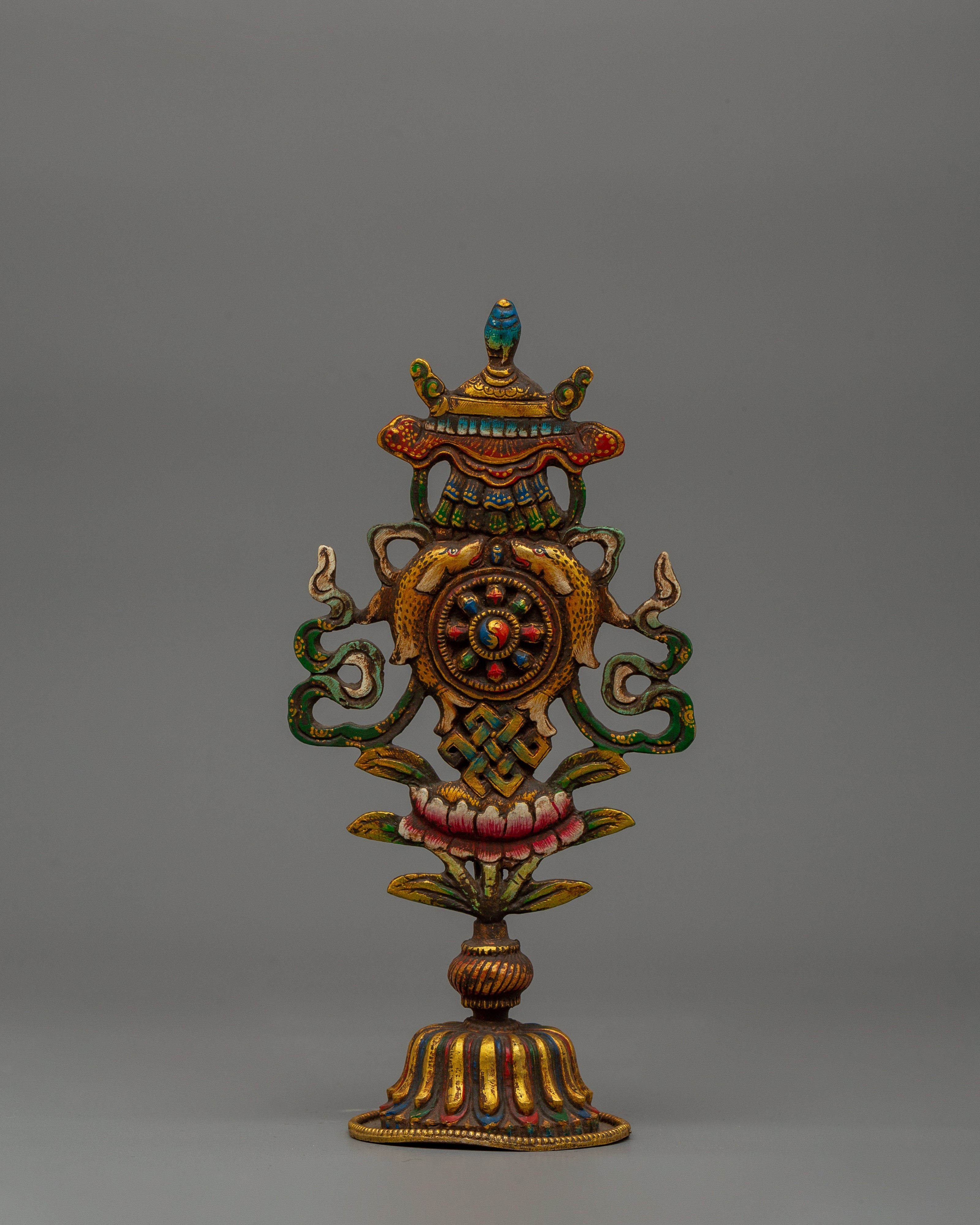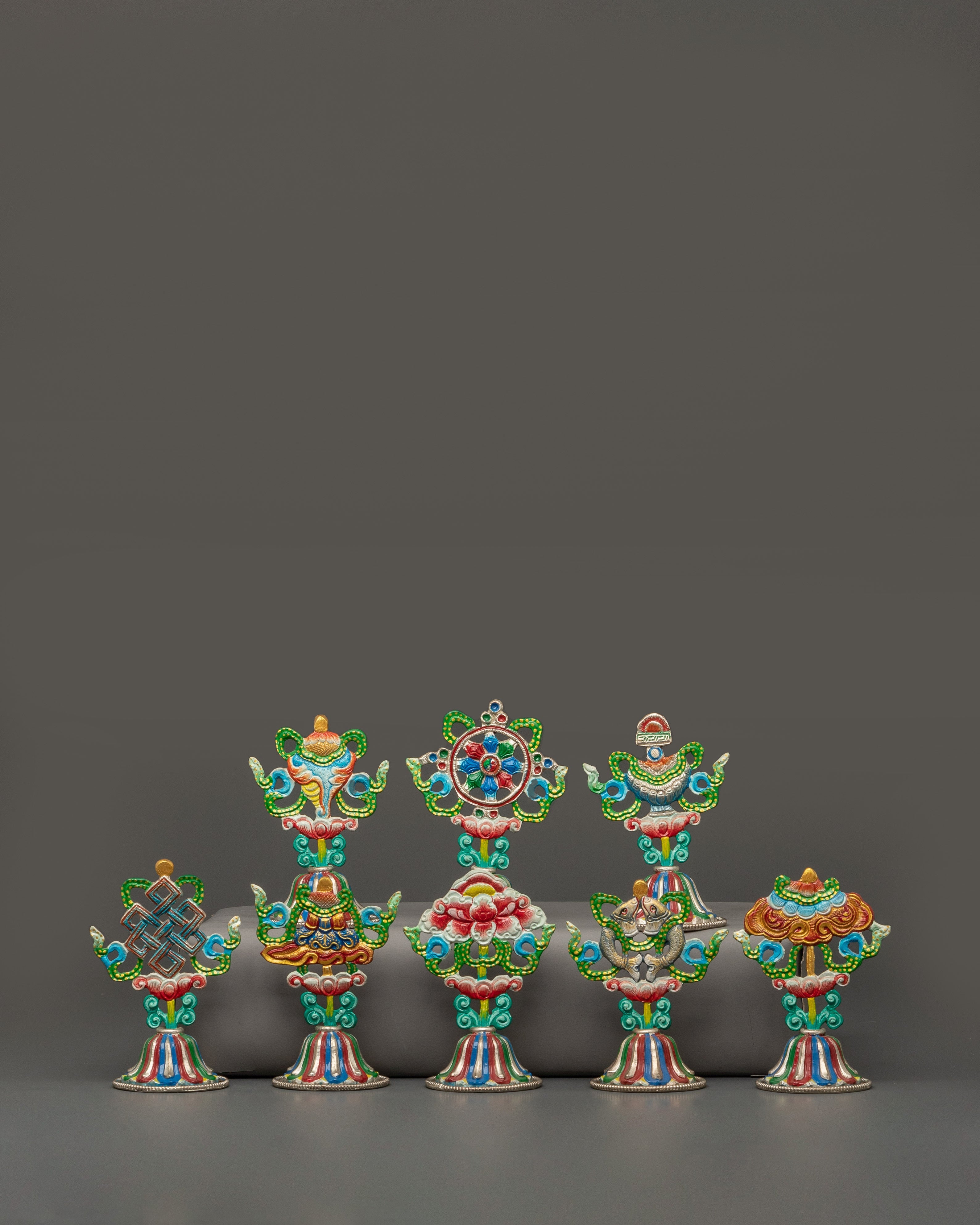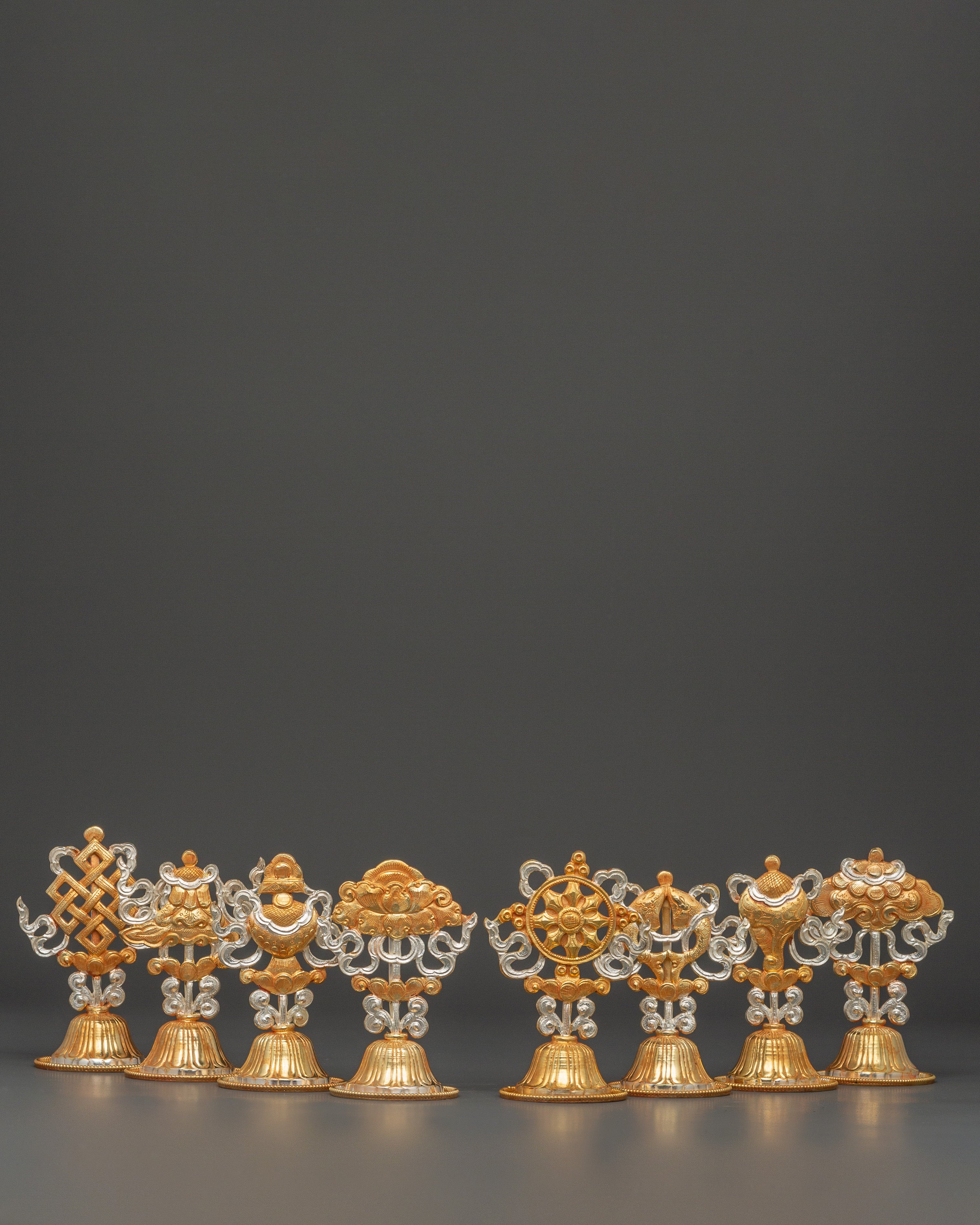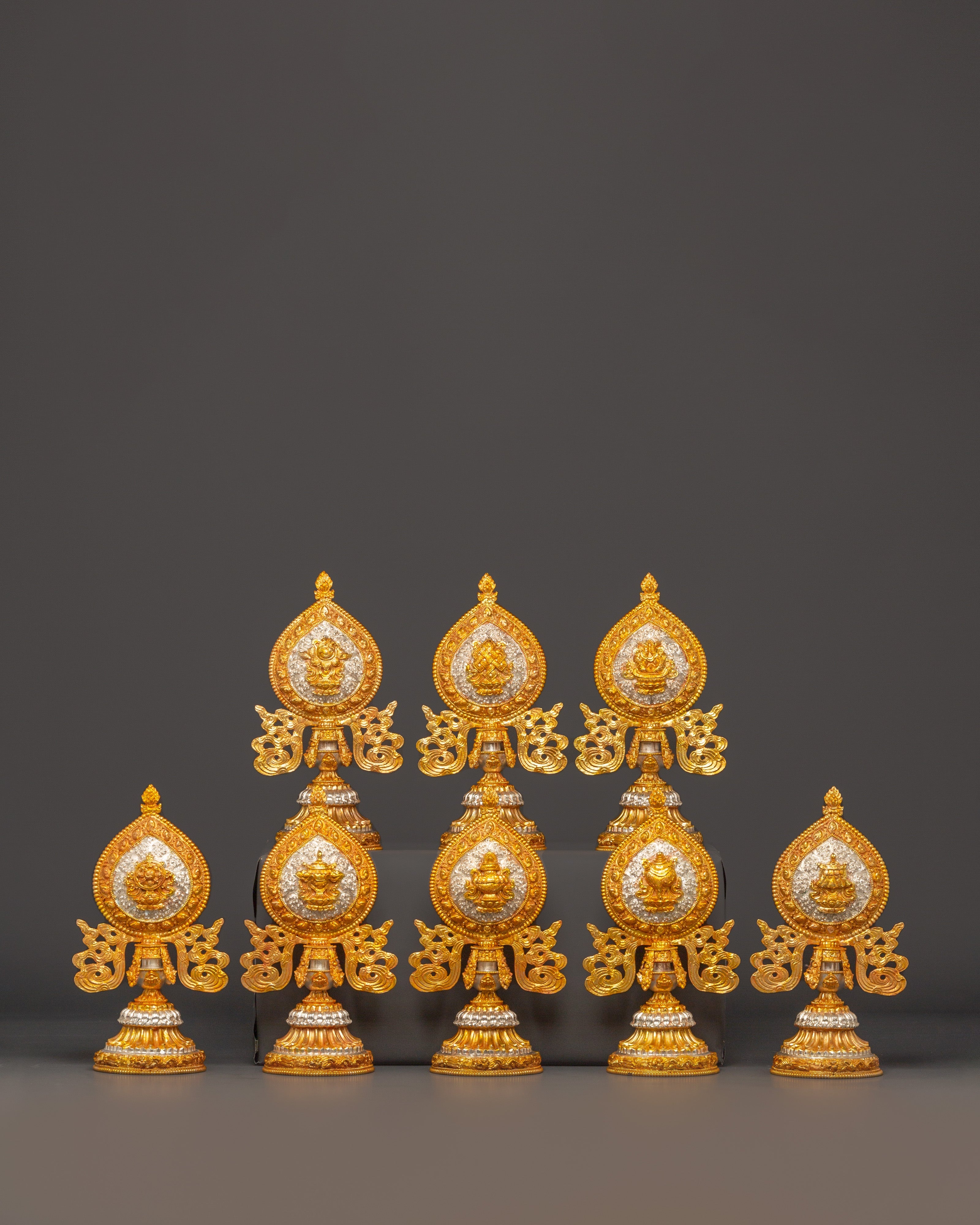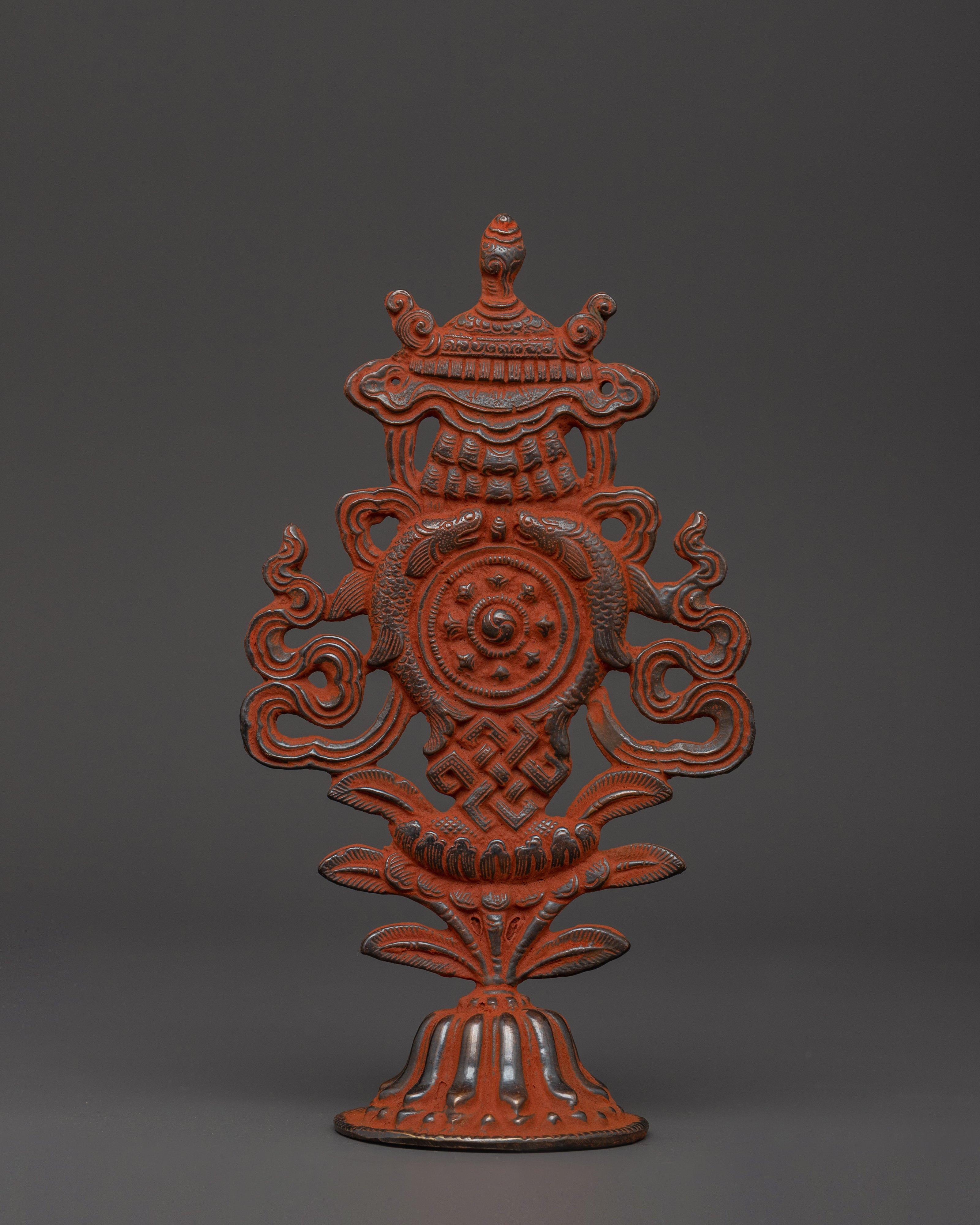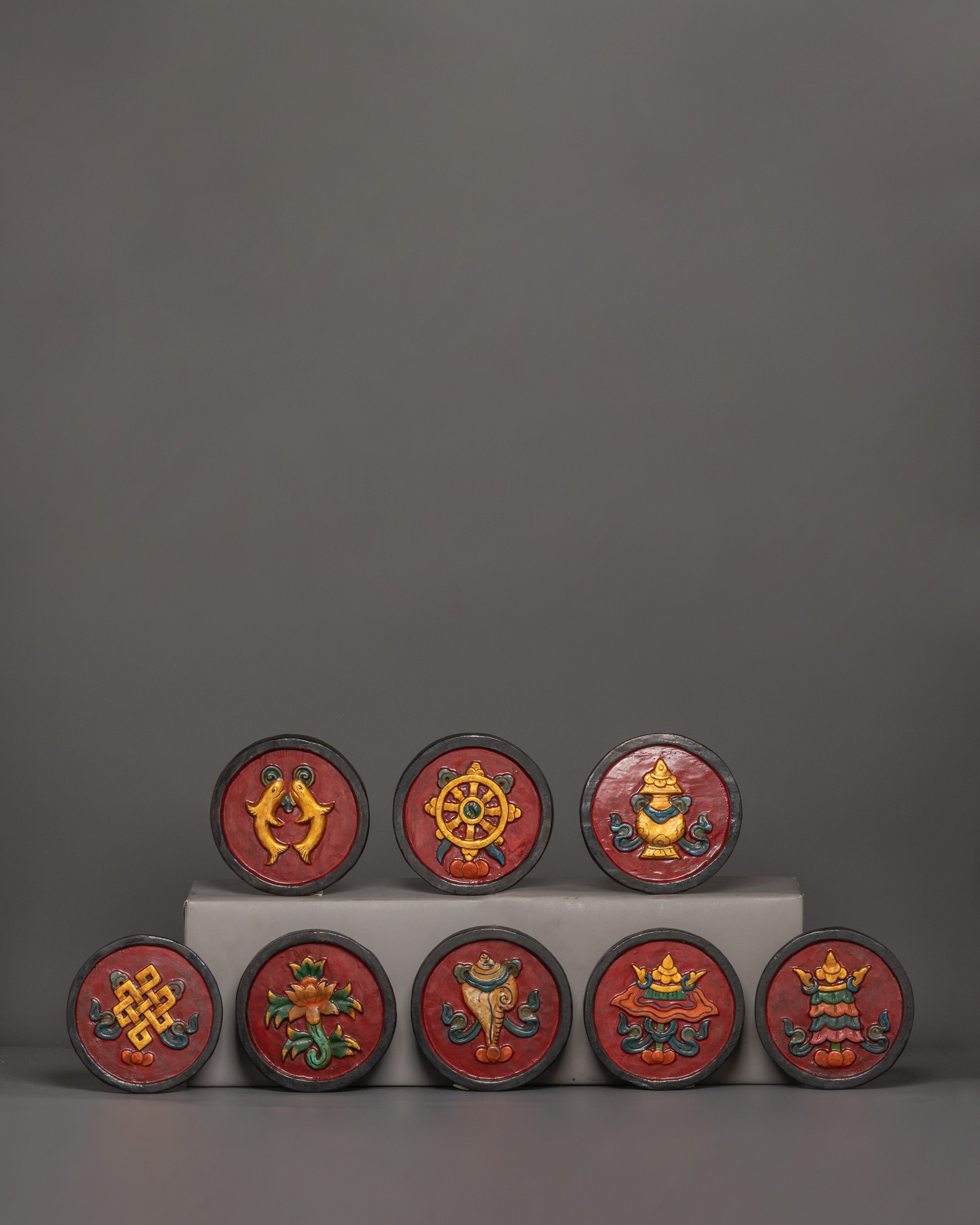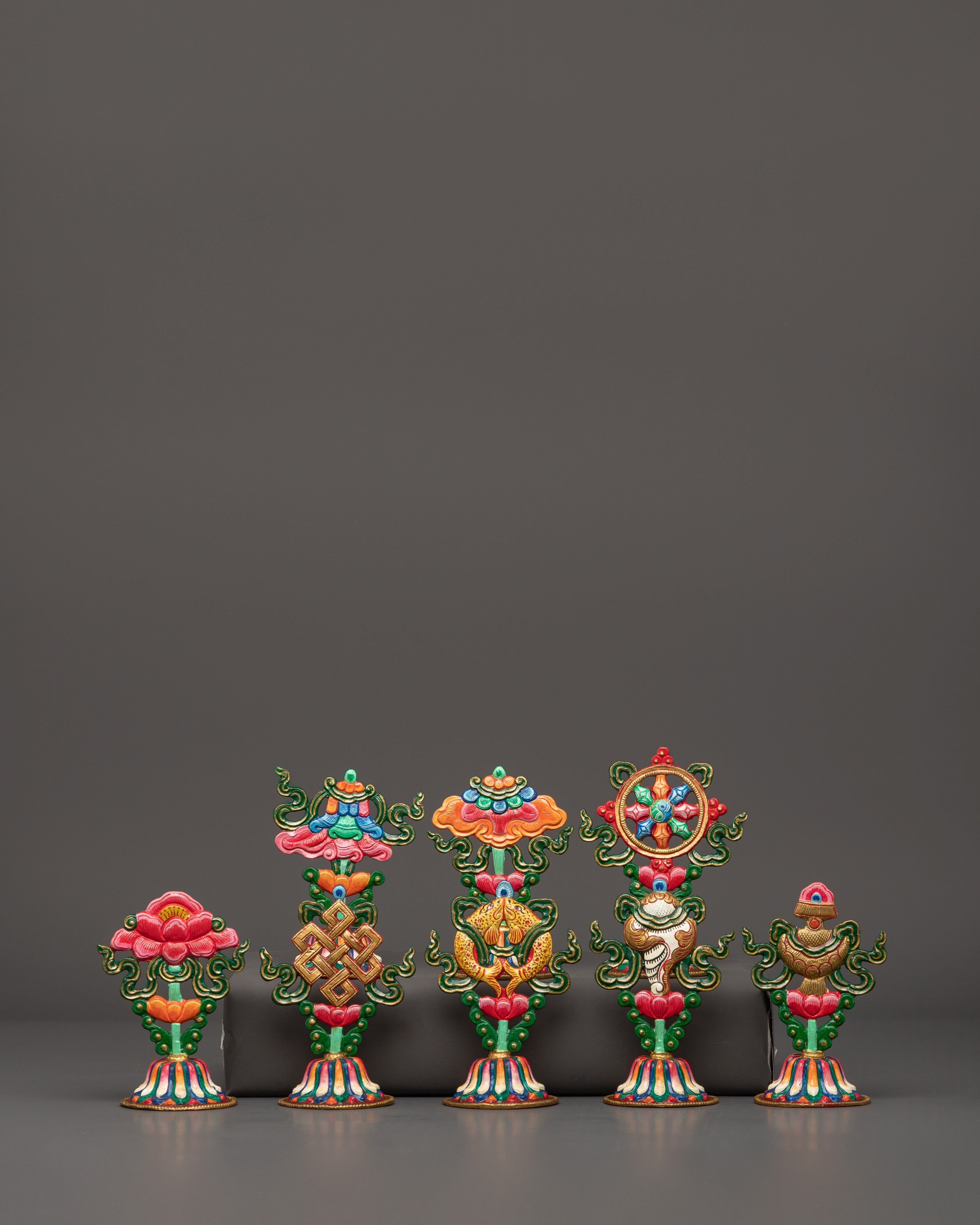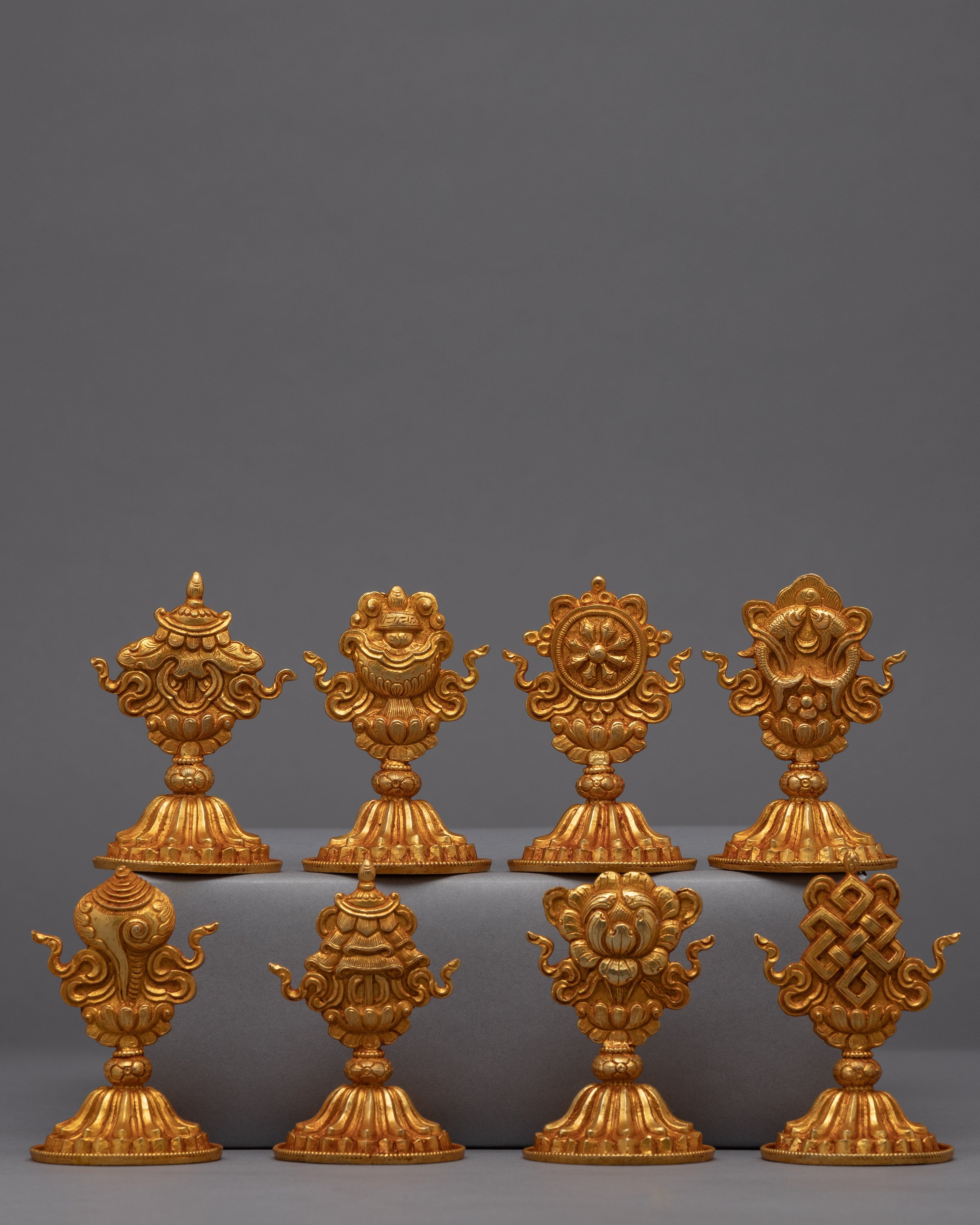Eight Auspicious Symbols
47 products
Showing 1 - 24 of 47 products
Eight Auspicious Symbols: Symbols of Spiritual Significance
Background and Significance:
A group of sacred symbols with strong Buddhist origins is known as the Eight Auspicious Symbols. They are also known as the "Tashi Targye Gyadzoe" in Tibetan and the "Ashtamangala" in Sanskrit. These symbols have profound spiritual importance and represent many aspects of Buddhist teachings and blessings. They play a significant role in the Buddhist traditions of Tibet and the Himalayas.
These emblems have historical roots in ancient India, connected to the royal symbol of the universal ruler. They were modified for Buddhism to communicate key spiritual ideas. Every sign on the route to enlightenment is a graphic depiction of a profound lesson, a virtue, or an aim.
Attributes and Iconography:
- Parasol (Chatra): The parasol represents defense against adversity and impediments to spiritual progress. It stands for the legitimacy of the Buddha's teachings and provides sanctuary to all creatures in need.
- Suvastika, or the Golden Fishes, are entwined and symbolize wealth and deliverance from the cycle of birth and rebirth (samsara). They are the epitome of boldness and overcoming obstacles in life.
- Treasure Vase (Kalasha): The treasure vase represents spiritual abundance and the boundless supply of virtues and admirable traits everyone possesses. It is spiritual riches personified.
- Lotus Flower (Padma): The lotus flower, with its roots in the mud and blossoms above the water, signifies purity, enlightenment, and the journey from ignorance to wisdom.
- Conch Shell (Shankha): The conch shell represents the Buddha's teachings (Dharma) and the power to awaken individuals from ignorance. Its sound announces the truth and resonates with the message of Buddhism.
- Endless Knot (Shrivatsa): The endless knot symbolizes the interconnectedness of all phenomena and the infinite wisdom of the Buddha. It embodies the union of compassion and understanding, illustrating the inseparable nature of these qualities.
- Victory Banner (Dhvaja): The victory banner signifies the triumph over obstacles on the spiritual path. It represents the victory of wisdom and truth over ignorance, illuminating enlightenment. It exemplifies the marriage of wisdom and compassion, demonstrating how these traits are inextricably linked.
- The wheel of Dharma, also known as the Dharmachakra or the Wheel of Law, is a representation of the path of enlightenment and the teachings of the Buddha. It is made out of an eight-spoke wheel, which stands for the Noble Eightfold Path. It serves as a reminder to practitioners of the value of wisdom, mental discipline, and ethical behavior.
Associated Stories and Beliefs:
These symbols serve as a reminder of the core ideas of Buddhism and have more significance than simple visual depictions. They bless and inspire practitioners and are frequently employed in rituals, artwork, and religious artifacts. Collectively, they represent the way to emancipation, wisdom, and spiritual development.
In summary, the Eight Auspicious Symbols are a pictorial and symbolic roadmap for achieving spiritual enlightenment. Encapsulating the essence of Buddhism, they bestow blessings and aspirations onto individuals who walk in the footsteps of the Buddha. In Tibetan and Himalayan Buddhism, the symbols comprise a sacred and inspirational set, each representing a distinct facet of Buddhist virtue and wisdom.







